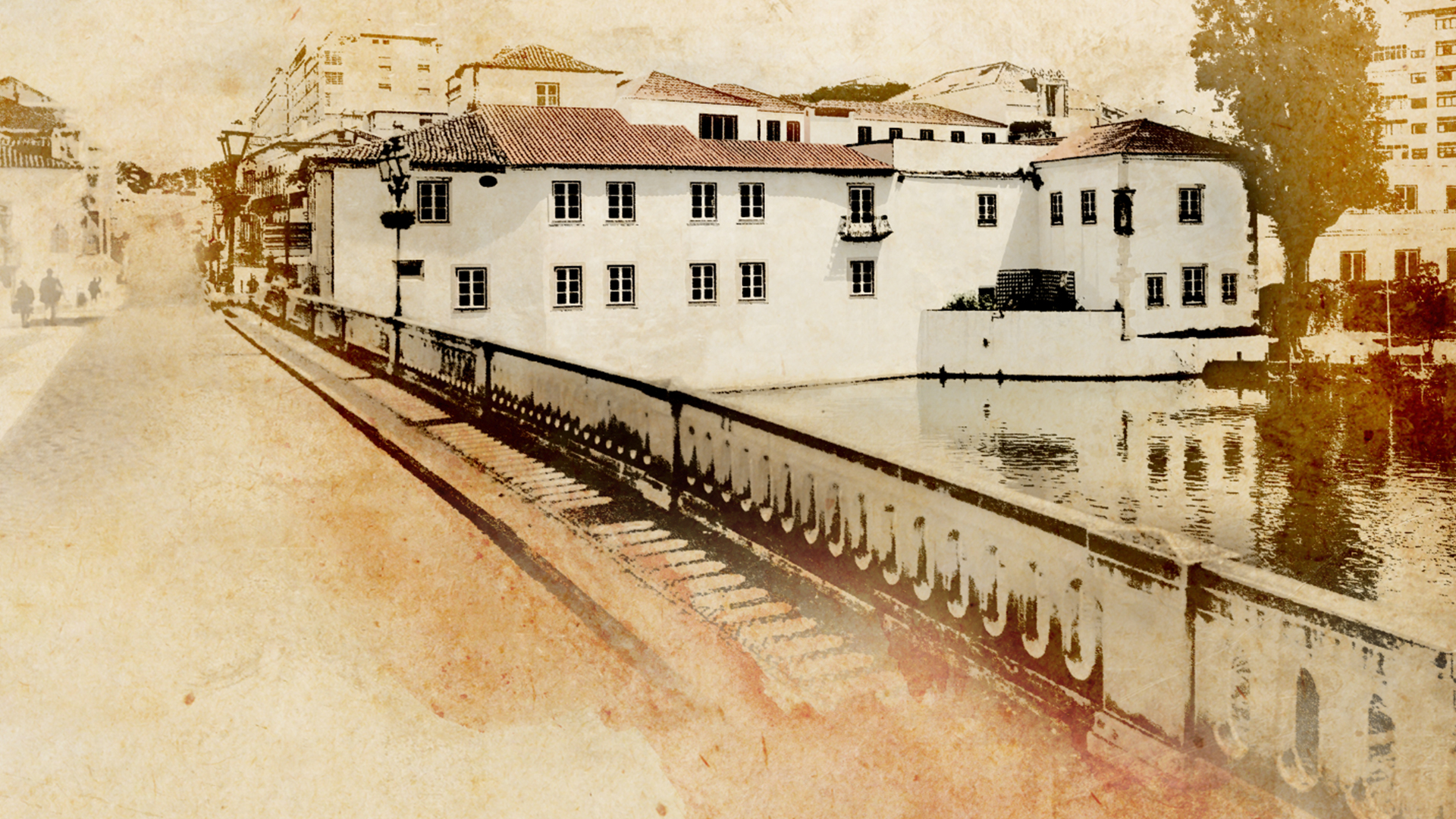The Santa Iria Convent was an ancient monastery of Poor Clares built in the early 16th century on the very spot where, according to tradition, Saint Irene (Santa Iria) was beheaded and thrown into the waters of the Nabão River.
An expression of Manueline, Renaissance, and Mannerist art, the convent building is located on the riverbank, overlooking the Nabão River. The Santa Iria Chapel stands out among the other buildings.
Rectangular in plan with a single nave, this temple is covered by a coffered ceiling decorated with ornamental paintings and walls lined with tiles with a “diamond tip” pattern. It also has a Manueline door that connects to the sacristy, bearing a calvary in stone from Ançã and an exuberant decoration alluding to the Holy Spirit in its chancel.
The frontispiece is fully in keeping with Renaissance art, a fact that can be gauged from the portico and window designed by Nicolau de Chanterene. There is also a niche with the image of Saint Irene (Santa Iria) on one of the corners of the building. Under this niche is a sculpture of a bull facing the Tomar Castle, whose meaning has been associated with the Knights Templar and the Arcturus constellation, which is related to the character of King Arthur and the narratives of the Round Table and the Holy Grail.
Inside, the altarpiece of the crucified Christ in the Vales Chapel, attributed to the sculptor João de Ruão, stands out. The convent cloister also has Renaissance proportions and decoration.
One of the most relevant elements in its surroundings is the Nuns’ Arch, a walkway over Rua de Santa Iria street, which connects the Convent to the former Friar António de Lisboa Palace.
After the extinction of the religious orders and the death of its last professed nun, the building was sold at public auction, and served as a warehouse, hostel and wool factory, until it was acquired by the Tomar Municipal Council in 2004. Due to its historical and artistic value, the Santa Iria Chapel was classified as a National Monument on 11th July 1920.
Santa Iria Convent
